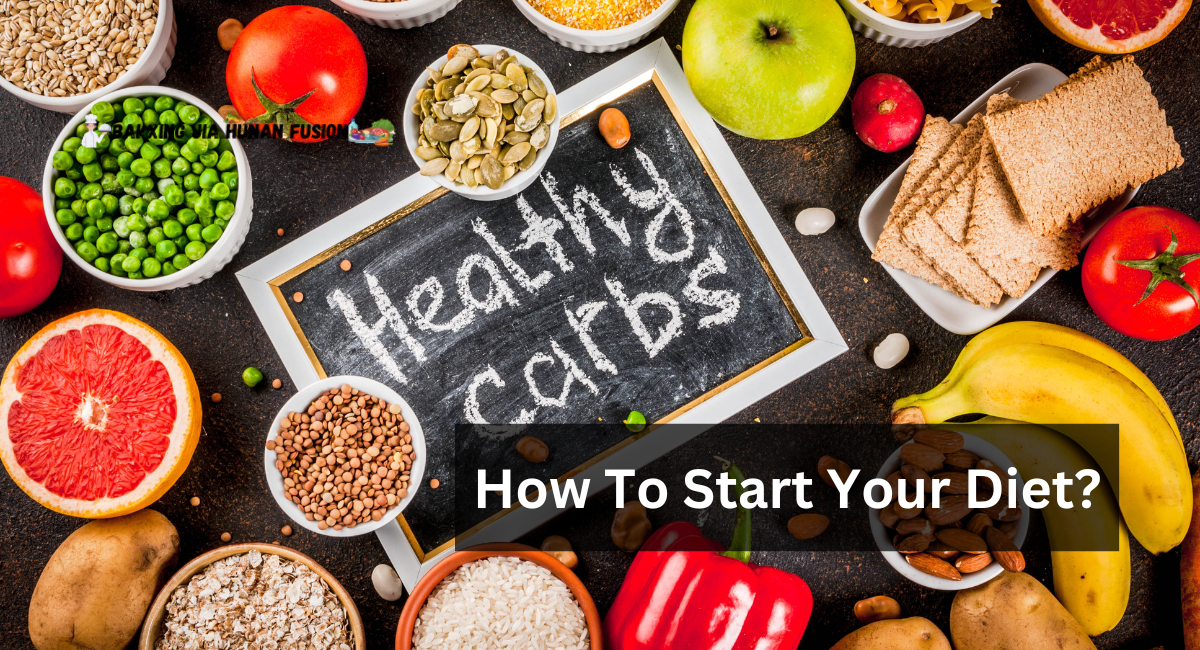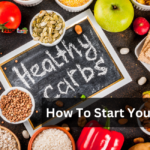Numerous People Wish to Start Eating Healthier and Adopt a More Nutritious Diet. When your diet consists primarily of highly processed, high-fat, or high-sugar foods, you increase your risk for chronic diseases. On the other hand, a healthy, well-balanced diet can help your immune system, promote healthy growth, and lower your chance of obesity, diabetes, and high blood pressure.
Make Small Changes to Your Diet Over a Few Weeks as Opposed to Many Drastic Changes All at Once, and You Will Be Able to Sustain a Healthier Way of Eating and Experience the Health Benefits of a Healthy Diet.
How To Start Your Diet?
Here are some step of how to start your diet
1. Preparation and Planning
1.Establish a Personal Goal. To Make Your Goal More Realistic and Attainable, You Must Be More Specific About What You Want From a “Healthy Diet.”
2.Establish a Food Diary. Consider Beginning a Food Journal Once You’ve Set a Few Goals and Determined How You’ll Achieve Them. This Will Be a Method for Tracking and Assessing Your Progress.
- Include all of your goals in your food diary. You Can Review Them as Necessary Or Alter Them as Your Diet Continues to Evolve.
- Also, record all of your food and drink in your food journal. This Will Help You Visually Identify What’s Missing from Your Diet and What You’re Eating Too Much Of. Ensure You Record Every Breakfast, Lunch, Dinner, Snack (Even a Few Nibbles), and Drink You Have Throughout the Day. This will be a superior resource the more accurate you are.
3.Create a Meal Plan. A meal plan is invaluable when attempting to follow a new diet. These Weekly Meal and Snack Plans Are Your Guide and Blueprint.
- Meal planning can assist individuals in maintaining a structured and planned approach to their dietary habits over a week. You’ll Know Precisely What and When You’ll Be Consuming. Thus, you can go to the grocery store with a detailed shopping list, purchasing only the ingredients you intend to use in your meals for the week. You can also plan for busy days; for example, if you know you’ll be extremely busy and working late on Thursday, prepare something on Wednesday that you can easily reheat and consume as leftovers on Thursday.
- Complement your meal plans with the corresponding grocery list. This Will Help You Get Into and Out of the Grocery Store Quickly and Ensure That You Have All the Necessary Ingredients at Home to Prepare All Your Meals.
- Don’t Skip Meals. If you currently skip meals, schedule a healthy meal or snack for yourself every four hours. It is more likely that skipping meals will result in binge eating, which contributes to weight gain.
2. What To Eat
1.Adopt a Diet That Is Balanced. Although there are many eating styles and diet plans, the most nutritious is a balanced diet.
- Every Individual Has a Unique Balanced Diet. You Must Consume the Appropriate Portion Sizes for Your Age, Gender, and Level of Physical Activity.
- Additionally, a well-balanced diet includes foods from each food group every day. All food groups provide beneficial nutrition for everyone, even though many diets recommend avoiding gluten, carbohydrates, and dairy. If you have an allergy to a food group, you should avoid it.
2. Select lean protein sources over those with a higher fat content. Protein Is Necessary for a Nutritious Diet; Nonetheless, It Is Advisable to Choose Leaner Protein Sources.
- Protein Is Necessary for a Variety of Body Functions, Including the Production of Energy, Maintenance of Lean Muscle Mass, Formation of Enzymes and Hormones, and Maintenance of Cell Structure and Function.
- Low-Fat Protein Sources Contain Fewer Calories and Fat Than High-Fat Protein Sources. Numerous High-Fat Proteins (Majority Derived From Animal Sources) Are Rich in Saturated Fat. Concentrating on Leaner Proteins Reduces Your Intake of These Types of Fat.
- Include one or two servings of protein at each meal to meet the daily protein requirements. One Serving Is About 3–4 Ounces, or About the Size of Your Hand.
3. Find Methods to Consume Five to Nine Servings of Fruits and Vegetables Daily. Fruits and veggies are the most important parts of a healthy diet. These are things that are full of nutrients that your body needs.
- Fruits and veggies are nutrient-dense foods because they have many nutrients but not many calories. They are one of the best places to get large amounts of fiber, vitamins, minerals, and antioxidants.
- Most people are told to eat between five and nine servings of fruits and veggies daily. To meet this suggestion, measure one cup of vegetables, two cups of leafy greens, and 1/2 cup of fruit.
4. Instead of refined grains, choose whole grains. Choosing 100% whole grains is a simple way to boost your diet’s nutritional value and improve your health. These Foods Are Much Healthier Than Processed Grains.
- 100% Whole Grains Contain All Three Parts of the Grain: the Germ, the Bran, and the Endosperm. They Are Less Processed and Contain Significantly More Nutrients, Including Fiber, Protein, and Minerals.
- Less work is done on whole grains than on refined grains. They usually don’t have as much fiber and protein because the bran and germ are removed. Avoid foods like pasta, white rice, pastries, chips, and crackers made with white flour.
5. Select fats from wholesome sources. Although fat should be monitored in the diet, a few types of fat are especially healthy and provide various health benefits.
- If you’re attempting to increase your consumption of healthy fats, you should replace them with unhealthy fats. Do not add any additional fats, healthful or otherwise, to a diet that already contains unhealthy fats.
- The best sources of these healthy fats are avocados, olive oil, olives, nuts, nut butter, canola oil, chia seeds, flaxseeds, and fatty fish (such as salmon, tuna, and mackerel). Remember, However, These May Also Contain a High-Calorie Count, So Consume With Caution.
- Numerous health experts advocated eating fatty fish at least twice per week and including a daily source of other healthy fats.
6. Consume Enough Fluids. Although water is not necessarily its food group or nutrient, it is essential to a healthy diet and body.
- Daily water consumption aids in maintaining hydration in the body. It is Essential to Help Regulate Body Temperature and Blood Pressure and Prevent Constipation.
- At Least Eight 8-ounce Glasses (2 Liters) of Water Are Typically Suggested Daily. However, many health experts now recommend drinking up to 13 glasses (3 liters) of water daily.
- In addition to water, you may also try flavored water, decaf, unsweetened coffee, and tea. These Calorie-Free and Caffeine-Free Beverages Are the Most Hydrating and Best-Tasting Beverages.
What To Avoid
Here are some things to avoid :
Follow the 80/20 Rule. Despite Your Desire for a Healthier Diet, It Is Appropriate to Enjoy Your Favorite Foods. Following the 80/20 Rule Can Help You Maintain a Healthy Diet While Indulging in More Delectable Foods Moderately.
Limit Sugars that are added and highly processed. Certain food groups should be consumed sparingly. Consuming added sugars in moderation is necessary, as they frequently lack nutritional value.
Restrict Unhealthy Fat Sources. In addition to added sugars, you should limit certain foods that contain a lot of fat. Particularly, you should avoid consuming excessive amounts of saturated and trans fat.
Consume Moderate Amounts of Alcohol. If you choose to drink, do so in moderation. Alcohol Consumption in Moderation Does Not Pose Health Risks for the Majority of Individuals.
Thanks for visiting our site hope you like it ..










